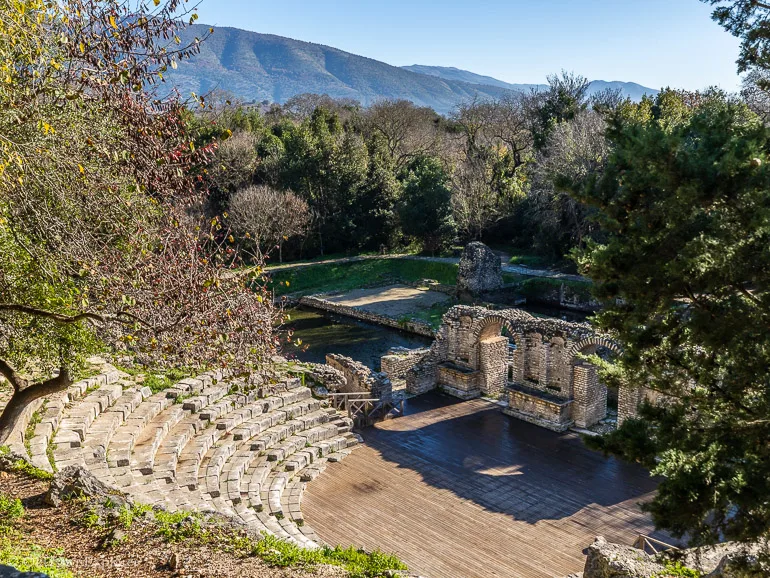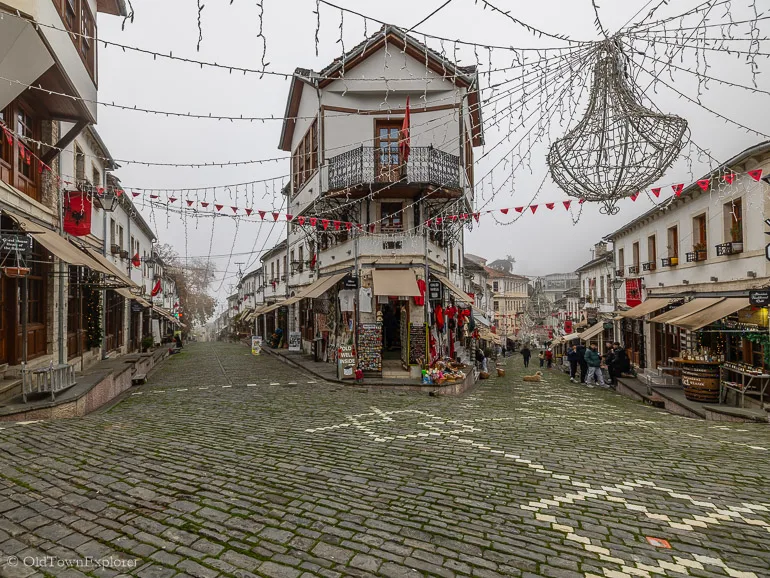Albania Architecture
Explore Albania Architecture: Architectural Styles & UNESCO World Heritage Sites
Albania’s architecture reflects centuries of cultural exchange, conquest, and continuity. From Roman amphitheaters and Byzantine churches to Ottoman-era mosques and hilltop castles, the built landscape tells the story of a region at the crossroads of empires.
To quickly identify the most significant examples of historic architecture, we often turn to the UNESCO World Heritage List. Albania has two cultural sites currently inscribed on the list—and several others on the tentative list worth exploring.
We’ve spent quite a bit of time in Albania. To maximize our enjoyment, we conducted a fair amount of research about Albanian architecture. We’ve compiled a summary of the information we collected below so you can start enjoying the historic architecture as soon as you arrive!
This website contains affiliate links that may earn us a small commission at no additional cost to you.
Architectural Styles in Albania
Albanian architecture showcases elements from Ottoman, Roman, and Byzantine styles, reflecting its rich historical and cultural influences over the centuries.
Ottoman
Ottoman influence is visible in mosques, hammams, stone houses, and covered bazaars. These structures often feature wooden balconies, intricately carved doors, and stone foundations—especially well preserved in cities like Berat, Gjirokastër, and Krujë.
Roman
Roman-era architecture in Albania includes ruins of theaters, forums, temples, and baths, most notably in Butrint and Apollonia. These sites offer insight into Albania’s role as a provincial hub during the Roman Empire.
Byzantine
Byzantine churches and monasteries are scattered throughout the country, especially in southern Albania. Characterized by domes, mosaics, and frescoes, these buildings illustrate the country’s long Christian heritage before the Ottoman period.
UNESCO World Heritage Sites in Albania
Albania currently has two inscribed cultural sites on the UNESCO World Heritage List, plus several more under review. These sites highlight the country’s exceptional architectural and archaeological value.

Butrint
Butrint is one of Albania’s most important archaeological sites. Originally a Greek polis, it later became a Roman colony and an early Christian bishopric. Over centuries, Butrint was abandoned due to flooding and earthquake damage.

Historic Centers of Berat and Gjirokaster
These two cities preserve distinctive urban ensembles from the Ottoman period, with stone houses, fortified castles, mosques, and churches set into dramatic landscapes.
Berat – Nicknamed the “City of a Thousand Windows,” Berat is built along the Osum River and framed by mountains. White Ottoman houses climb the hillside below Berat Castle, which contains churches, the Onufri Iconography Museum, and panoramic views. Berat reflects layers of Illyrian, Greek, Roman, Byzantine, and Ottoman history.
Gjirokastër – Known as the “City of Stone,” Gjirokastër is famous for its steep streets, slate roofs, and fortress overlooking the Drino Valley. Gjirokastër Castle and the well-preserved Ottoman tower houses (kullë) are architectural highlights.
FAQs About Albania Architecture
What is the style of architecture in Albania?
Albanian architecture is a mix of Ottoman, Roman, Byzantine, and vernacular styles. During the communist period, many historic structures were destroyed or repurposed, but post-1990s restoration efforts have revived interest in preserving Albania’s architectural heritage.
What are Albanian houses made of?
Traditional tower houses, or kullë, are typically built with stone lower floors and timber-framed upper floors using plaster and clay. In Ottoman-era towns, houses often include bay windows, tiled roofs, and terraces designed for family gatherings and natural cooling.
